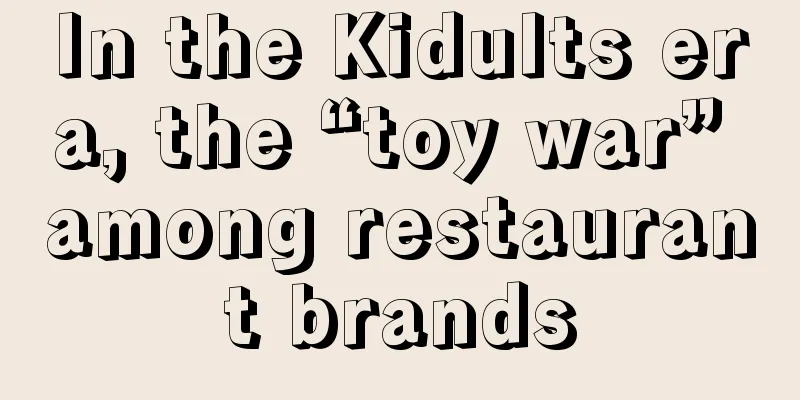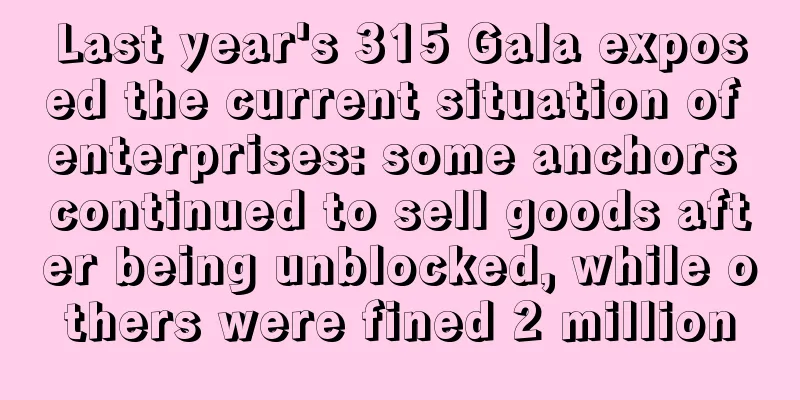[Haha] Three important ways of thinking: Why do you always keep trying but still fail to solve the problem?
![[Haha] Three important ways of thinking: Why do you always keep trying but still fail to solve the problem?](/upload/images/67e7005fc61de.webp)
There is a vicious circle in problem solving that many people, including me, have encountered: seemingly complex problems always have simple and effective solutions, which we often fail to think of during the process and only realize afterwards. Our brains tend to solve problems linearly, but we find that they are not effective halfway through, and we can't find a better way. This article studies this vicious circle and the reasons behind it from the perspective of thinking mode, and I believe it will be valuable to you. Let’s take a look at this elementary school math problem: "Bonjour sends a ship from New York, USA to Le Havre, France, every day. It takes 7 days and 7 nights for a ship to travel one way. Now suppose you depart from New York, how many ships can you meet on the way to Le Havre?" This elementary school math Olympiad-level problem has a special name – the “New York-Le Havre Problem”. If your answer is 8, and you think that there were exactly 8 ships sailing out from the opposite port during this period, then you have the level of elementary school mathematics. But the correct answer should be 15, because at the moment you set out, there are already 7 ships on the ocean that have set out in the past 7 days. Many people would attribute such mistakes to carelessness when they were in school, but often later they would feel powerless and become careless from time to time. At this point, you will feel as if no matter what you do, you will inevitably make mistakes. The reason why this question is classic is that it is not only an easy-to-make mistake, but also represents a way of thinking - solving problems outside the original framework. 01The ability to think outside the box is often explained by many nouns, such as slow variables, trends, macro environment, etc., but to put it simply, it means understanding the truth that " what you see is not necessarily everything ." How do you understand this sentence? Taking the math problem above as an example, your perspective starts from the day you set out, but outside your perspective, this system of ships traveling back and forth has been running, and there are already 7 ships on the way, and you just happened to set out on a certain day. This is the first way of thinking I want to share— system thinking, which means that you need to have the ability to temporarily withdraw your thoughts from the problem at hand. In 1985, Intel, a company that mainly produces memory, was losing business to Japanese companies and its profits were declining. Andy Grove, the CEO of Intel at the time, suddenly realized that the demand was not for memory but for the personal computer industry, and memory was only a small part of the personal computer system. After analysis, he decided to abandon the memory business and strategically transform into the microprocessor business, which led to the Intel series chips that are still leading the industry today, and Intel has returned to the upward track. By shifting his focus from memory to the entire system of personal computers, Grove found a new S curve for the company's growth. In fact, if you only focus on the inventory in front of you, it will be difficult to see the big opportunities behind it. This can even be very inspiring for our daily social relationships. For example, if your partner or child suddenly gets angry at you, don't dwell on the specific problem, but see if there are other longer-term reasons, such as insufficient companionship. It turns out that many interesting scientific discoveries and great business strategies are inseparable from thinking outside the box. 02Look at the following question: "There are 32 teams in a World Cup. Now that the budget has been reduced, it needs to be concluded as soon as possible. If you were asked to re-set the competition system, how many games would be the minimum to decide the champion?" It seems complicated, right? But if you think about it from another angle, to decide the champion, 31 teams must be eliminated. At most one team can be eliminated in one game, so at least 31 games are needed. This is the second way of thinking I want to share with you - " If you find something difficult, look at it from the opposite perspective ." There was a wealthy Arab businessman who had two heirs. When he was dying, he wanted to decide which son to pass on his property to. He gave them a question: "This is the starting point and the end point. You two have a horse race. Whoever's horse reaches the end point slower will get my property." You see, this competition is very strange, because the result of competing for speed is likely that both players will try every means to make their horses stay where they are and not move. When will this end? If you use reverse thinking, if you want to win the race, you can either make your own horse slower or think about making the opponent's horse faster. So the way to win is actually very simple, which is to grab the opponent's horse and run to the finish line as fast as possible. If system thinking is to jump out of the framework, then reverse thinking is to re-examine and change the existing framework. One of the good methods is "antonym thinking" . Charlie Munger has a famous saying in "Poor Charlie's Almanack": Think in reverse, always think in reverse. Whether it is the champion of the World Cup or the slow horse race, if we can think from the antonym, it is actually elimination and speed. If you can think of this level, you will suddenly understand. Reverse thinking can also help us solve many problems in life. There is a report saying that China's "sleep economy" is rising rapidly, with the market size growing at a rate of 10% per year. It is expected that the total size will exceed one trillion yuan in 2030. More than 300 million people in my country suffer from insomnia every year. As a result, a series of sleep-aid products have emerged in the market, such as sleep-aid bedding, aromatherapy essential oils, melatonin health products, sleep-aid apps, etc. Have you noticed that there are many different sleep aid products, but the ideas are all the same, which is to use various methods to help users fall asleep as quickly as possible. This is typical pure positive thinking. For people with insomnia, the more they want to solve the problem, the more they can’t sleep and the more anxious they become, which forms a vicious cycle. Now that you have learned reverse thinking, what better solution do you have? Let’s put it into practice. The antonym of falling asleep is staying awake. So is there a way to make it difficult for users to stay awake? The psychologist's treatment method is to make a rule with the insomniac client: in order to become an excellent person, the client is not allowed to go to bed before three in the morning, finish reading a book every night, and then send the reading notes to the doctor at three in the morning to check in. As a result, the client only persisted for three days, and on the fourth day he fell asleep as soon as he opened the book. The same thinking logic can also be applied to the business field and become an important strategy. Let me give you two more examples below. There is a snowmobile manufacturer called Polaris that specializes in the market in countries with year-round snow. However, as the global climate warms, their market size is shrinking. Through reverse thinking, they discovered that hot countries can also generate demand for snowmobiles, as all they have to do is change the scene to a beach, because the feeling of walking on the beach and the snow is similar. So they slightly modified and developed beach motorcycles, and now even Phuket, Thailand, is using their products. Frito-Lay is a salty snack company that holds 40% of the market, but has lost 1/5 of its market share in the past decade. If you were the CEO, what would you do to regain market share in the local market? You might spend more marketing money, hire better endorsements, and continuously launch new products. But the new CEO found that Frito-Lay had 90% of the industry's R&D capabilities and 80% of its sales capabilities, but only had 40% of the market share, which meant that the company's existing capabilities were not fully developed. So he changed the strategy of regaining domestic market share to using the best products to enter the overseas market, and put the company back on track. So, when you are troubled by a complex problem, you might as well try to find the key to the problem and think about possible solutions from the opposite side. 03What I want to share next is premise thinking. In the battlefields of World War II, airplanes and pilots were extremely valuable combat resources, so the Allies specially recruited a group of scientists to study how to better protect fighter planes. They found that the wings of the aircraft were hit more densely, while the fuselage and tail were hit more sparsely. The advice of the Allied high-ranking officials at the time was to strengthen the protection of the wings. However, Professor Ward disagreed with this proposal, and instead proposed that a large number of aircraft with damaged wings could fly back to the base for research, which proved that the damage to the wings was not fatal. Because the premise for the aircraft to be studied by them was that the aircraft could return, and those aircraft that were actually shot down were not hit on the wings, but on the engines, so we should strengthen the protection of the engines. This case was later called "survivor bias". The facts we see often have premises. For example, the premise for the airplane to be studied in this case is that it can "return home". If this premise is ignored, there may not be subsequent discoveries, and it may even affect the victory of the war. Ignoring the premise is actually very common. When we were young, there were often academic masters around us. They read extracurricular books in class and seemed not to study hard, but they always got high scores in every exam. So some people thought that reading more extracurricular books would help them get high scores, so they read as much as they could, but in the end, they never got high scores. Of course, we all know that academic masters can get high scores by reading extracurricular books, but the premise is that they have a scientific learning method and study efficiently when you can't see them. They read extracurricular books to make up for the knowledge that is not in the textbooks or that they are interested in. You may think this is just a silly idea that only children would have, but in fact many adults in business imitate the industry's practices and easily come up with a solution that satisfies themselves. Here’s another example from our daily life: I remember chatting with a friend once. He was a food manufacturer, and his food sales had reached a certain scale. He said that he had reached a bottleneck in the current growth through channel expansion. I asked him what he was going to do. He said that he saw that big companies in the industry, such as Coca-Cola and KFC, used their own logos or classic images as IP to launch different peripherals, and he also wanted to start creating IP for his own brand. I suggested that he give up this idea. Because whether it is Coca-Cola or KFC, they use IP to make peripheral products with a premise, which is that their market penetration is large enough, enough people have seen and remembered their brand, and then use this brand as the basis to create IP to further break the circle barrier and influence more people. But his food does not have this foundation, and its market share is small. Even if he creates an IP, how many people will associate it with his product when they see this IP? So when we think, we must understand that there is a premise behind every result. Ignoring the premise and copying the playing method in the hope of getting the same effect is like trying to find a sword by carving a mark on the mark. Often, clarifying the premise can give us a very simple and beautiful solution. I have a 3-year-old nephew. One day, he was watching his grandfather doing carpentry. Because the tools were very sharp, his grandfather didn't let him get close. He drew a line on the ground, saying he could only look but not cross. Later, when his grandfather went to drink water, he came back and found that the child had pulled his grandfather's wood stick to the line on the ground. He didn't have to cross the line, but he could get closer. You see, even a child understands that the premise of this question is just that “people cannot cross the line”, but this premise does not absolutely limit the distance between him and the carpenter. This is also the reason why I don’t like success studies very much, because the content in it often downplays some important prerequisites for success. 04To sum up, this time I shared three thinking methods to improve problem-solving ability: systematic thinking outside the framework, reverse thinking, and premise thinking. The biggest reason why our minds become less flexible as we grow older is that as we gain more knowledge and experience, we easily fall into the "deconstruction trap" when thinking - starting from the easiest point of view, rather than the most important part. Google has an innovation department called the "Moonshot Factory", whose job is to do the most cutting-edge and challenging tasks. When introducing the department to every new employee, they tell a story - "If the task is to let monkeys read Shakespeare's plays on a mast, the easiest way to start is definitely to build a mast, but what the department has to do is to teach the monkeys to read first." It is important to start with the crux of the problem. Next time you’re faced with a problem and feel like you’ve hit a dead end, try this:
I hope the above will inspire you. Author: Mr. He, public account: "Yuanwai He" (ID: Yuanwai-HE) |
>>: Connecting the membership system may be the best solution for Meituan
Recommend
Luckin Coffee raises prices, "backstabbing" migrant workers returning home
From the initial price cuts to snipe Kudi Coffee t...
Video e-commerce in the past year: from private domain to public domain, from social to algorithm
Video account e-commerce has achieved significant ...
Is the Shopee commission the same for each site? What are the differences between sites?
Nowadays, e-commerce is developing more and more r...
The creation of urban cultural IP from the booming ice and snow tourism in Harbin
This city in northeast China has successfully deve...
The four key words of 618: AI, low prices, refunds only and high return rates
This article mainly discusses the four key words o...
In 2025, e-commerce players will also be "revamped" by Pang Donglai
As a benchmark for offline retail, Pang Donglai he...
In the era of consumption downgrade, why did Luckin Coffee lower its prices and Moutai raise its prices?
In the era of consumption downgrade, why do some c...
As Xiaohongshu “enters” the film and television industry, can it become a new “film and television base”?
There seems to be a new trend on Xiaohongshu: &quo...
Does Amazon's profit report include payment collection? How does Amazon calculate profit?
Amazon merchants are more concerned about the issu...
11.58 million young people "escape from virtual to real": flee from large factories and flock to manufacturing
Nowadays, more and more young people are fleeing l...
AI is a standard feature of future SaaS, but it is not a panacea
In recent months, AIGC (Artificial Intelligence Ge...
The new type of "coffee blind box" is becoming popular: daily sales of more than 10,000, it depends on luck what you get?
This article starts with the recently popular &quo...
The “Poor Man’s Meal” is selling well. Are merchants making a profit or a loss?
Why can the "poor man's meal" enter ...
Which cross-border e-commerce platform is easy to operate? Introduction to major platforms
Doing business is not that easy, especially openin...
How is Amazon's warehouse relocation fee calculated? Detailed answer
When doing business on Amazon, if the merchant'...









